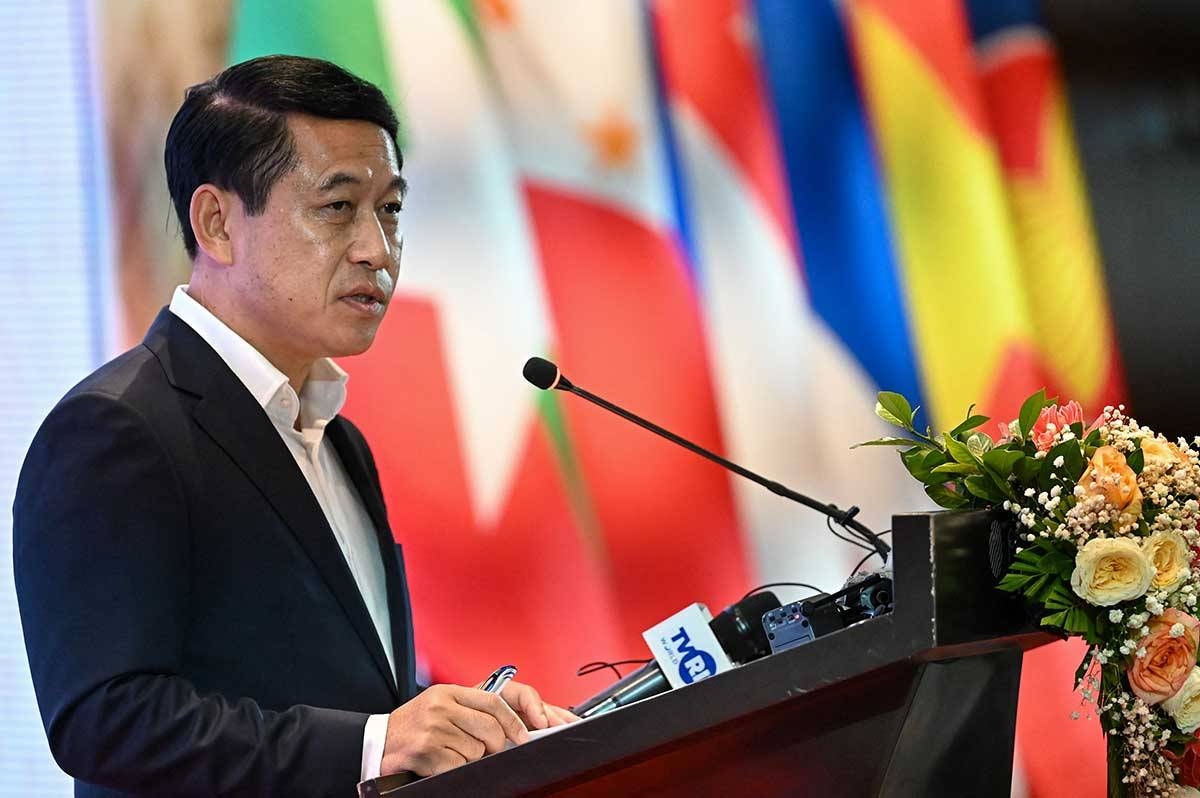LUANG PRABANG, Laos: The recent assertiveness of China in the South China Sea and the escalating violence in Myanmar were the key topics of discussion among Southeast Asian diplomats at their meeting in Laos on Monday. The Laotian foreign minister, Saleumxay Kommasith, expressed cautious optimism that progress could be made this year on both contentious issues.
During the meeting, Saleumxay informed reporters that Thailand was moving forward with plans to provide more humanitarian assistance to Myanmar, where the civil war has displaced over 2.6 million people. He also noted that it was a positive sign that the military leaders who seized control of Myanmar in February 2021 had sent a high-level representative to attend the ASEAN foreign ministers’ meeting in Luang Prabang.
“We feel a little bit optimistic that the engagement may work, although we have to admit that the issues that are happening in Myanmar will not resolve overnight,” Saleumxay said. “I think there is probably a small light at the end of the tunnel.”
Myanmar has been barred from sending its foreign minister or any political representative to high-level ASEAN meetings since the end of 2021, when it blocked the group’s envoy from meeting with Aung San Suu Kyi. Instead, Myanmar has been sending non-political representatives to lower-level working meetings but has refused to participate in high-level meetings.
However, in Laos, Myanmar sent a non-political Foreign Ministry official, Asean Permanent Secretary Marlar Than Htike, which Saleumxay considered “a positive sign.”
The Association of Southeast Asian Nations (ASEAN) comprises Indonesia, Thailand, Singapore, the Philippines, Vietnam, Malaysia, Myanmar, Cambodia, Brunei, and Laos. Together, these member nations have a combined population of nearly 650 million and a GDP of more than $3 trillion.
Laos, which has assumed the rotating ASEAN leadership this year, is the poorest nation and one of the smallest countries in the bloc. Many have expressed doubts about its ability to address the mounting crises effectively. However, as the first ASEAN country sharing a border with Myanmar to serve as chair since the military took control, Laos brings a unique perspective to the table.
Laos has already dispatched a special envoy to Myanmar for meetings with the head of the ruling military council and other top officials in an attempt to make progress on ASEAN’s “five-point consensus” plan for peace. The plan includes the immediate cessation of violence, dialogue among all concerned parties, mediation by an ASEAN special envoy, the provision of humanitarian aid through ASEAN channels, and a visit to Myanmar by the special envoy to meet all concerned parties.
So far, the military leadership in Myanmar has ignored the plan, and the violence and humanitarian crisis continue to escalate rapidly. Saleumxay emphasized that ASEAN would persist in pushing for the full implementation of the consensus while also increasing humanitarian support.
Laos, as one of the ASEAN countries with close ties to China, has drawn speculation that it may seek assistance from its giant neighbor in addressing the crisis in Myanmar. While China has stated its non-interference policy in the internal affairs of other states, it remains uncertain whether assuming such a role would be acceptable to other ASEAN members.
In conclusion, the ASEAN meeting in Laos highlighted the concerns over China’s assertiveness in the South China Sea and the ongoing crisis in Myanmar. Despite the challenges, there is a glimmer of hope for progress, as diplomatic efforts continue and humanitarian aid is being provided. The role of Laos as the current ASEAN chair and its proximity to Myanmar bring a fresh perspective to the discussions, and the association remains committed to finding a peaceful resolution and supporting the people of Myanmar during this difficult time.
Source: The Manila Times








